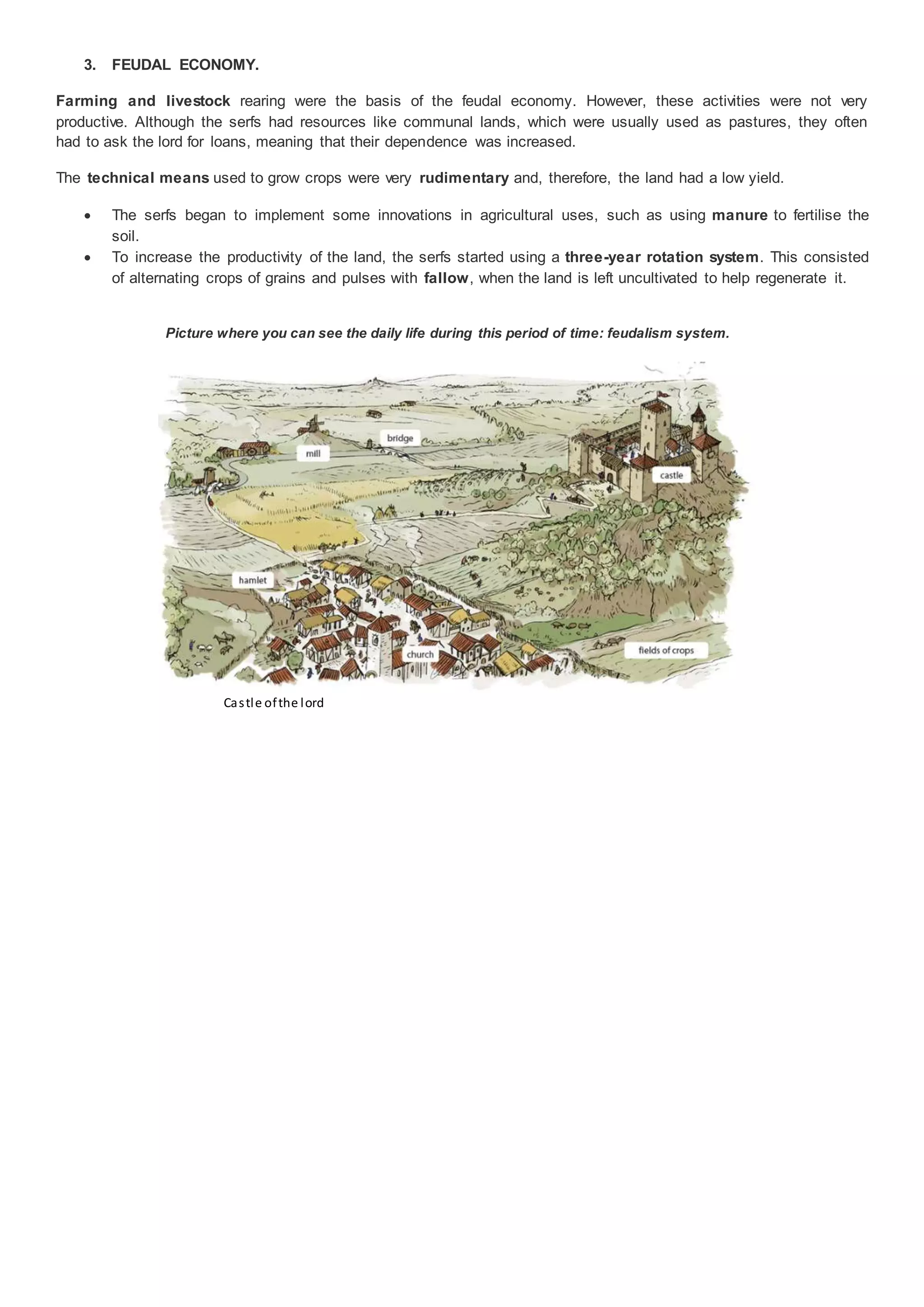Feudalism developed in Western Europe from the 9th-15th centuries as a political, social, and economic system. Kings lost power and shared it with nobles and the church. Society was divided into estates - nobility and clergy at the top, and peasants at the bottom. Peasants (serfs) were bound to manors and had to pay taxes and labor services to lords in exchange for land. The feudal system established hierarchies and obligations between kings, lords, and serfs and was based on a rural, agricultural economy with low productivity.



